This post shows students and new users how to turn the Hibernate Mode on or off in Windows 11.
Hibernate mode is similar to sleep mode in Windows 11, but there are key differences. In sleep mode, your desktop session and current work are saved in the system’s memory (RAM), allowing you to quickly resume your previous sessions. However, the computer remains partially powered on.
In contrast, hibernate mode saves your session to the hard drive and completely shuts down the computer, which conserves more power while allowing you to pick up right where you left off when you turn it back on.
Enabling hibernation mode allows you to save energy because Windows shuts down, and you can quickly resume your work and sessions when you turn your computer back on.
How to enable hibernation mode in Windows 11
Hibernation mode in Windows 11 allows you to shut down your computer while saving your work, enabling you to quickly resume when you turn it back on.
To turn it on, go to the Start menu, search for Control Panel, and select the relevant result, as shown below.
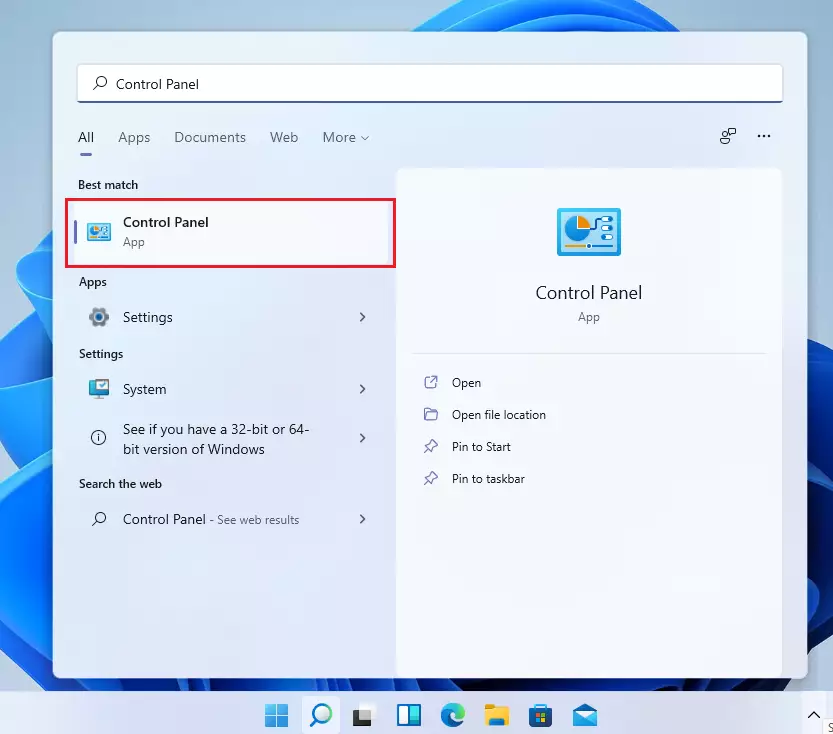
When the control panel app opens, go to System and Security, as shown below.

Select the link for Change what the power buttons do on the System and Security category pane, as highlighted below.
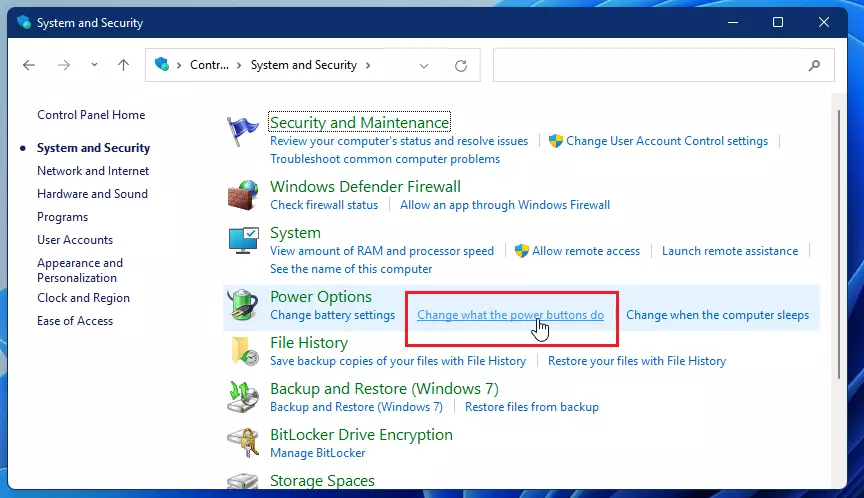
On the next screen, click the link for Change settings that are currently unavailable, as shown below.
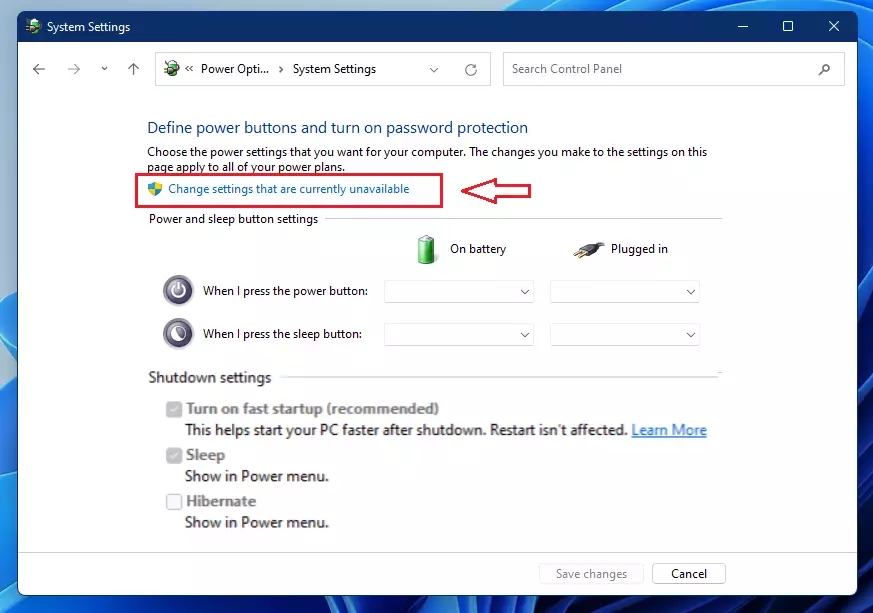
Then, enable Hibernate mode, as shown below. Click Save Changes, then exit.
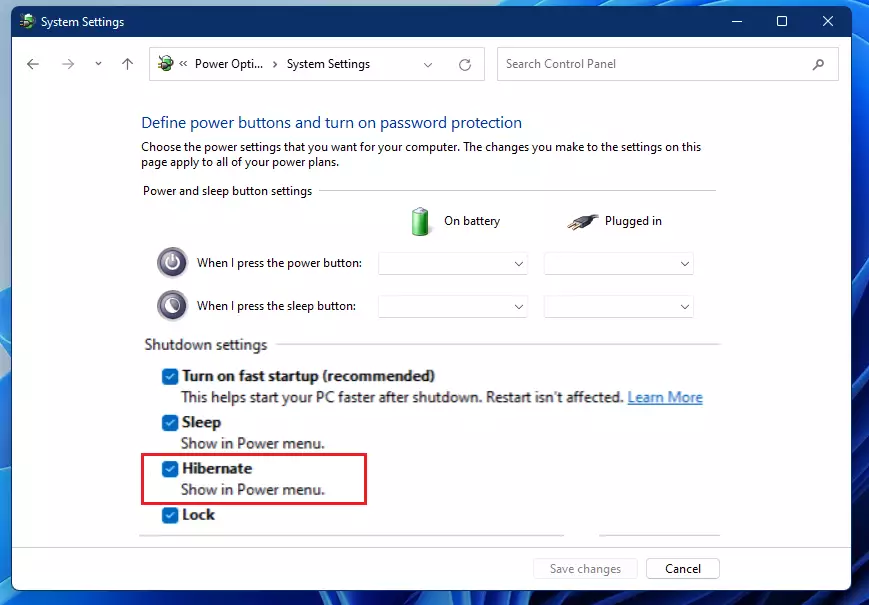
Now, the Hibernate button will be an option when you want to shut down or put your computer to sleep.
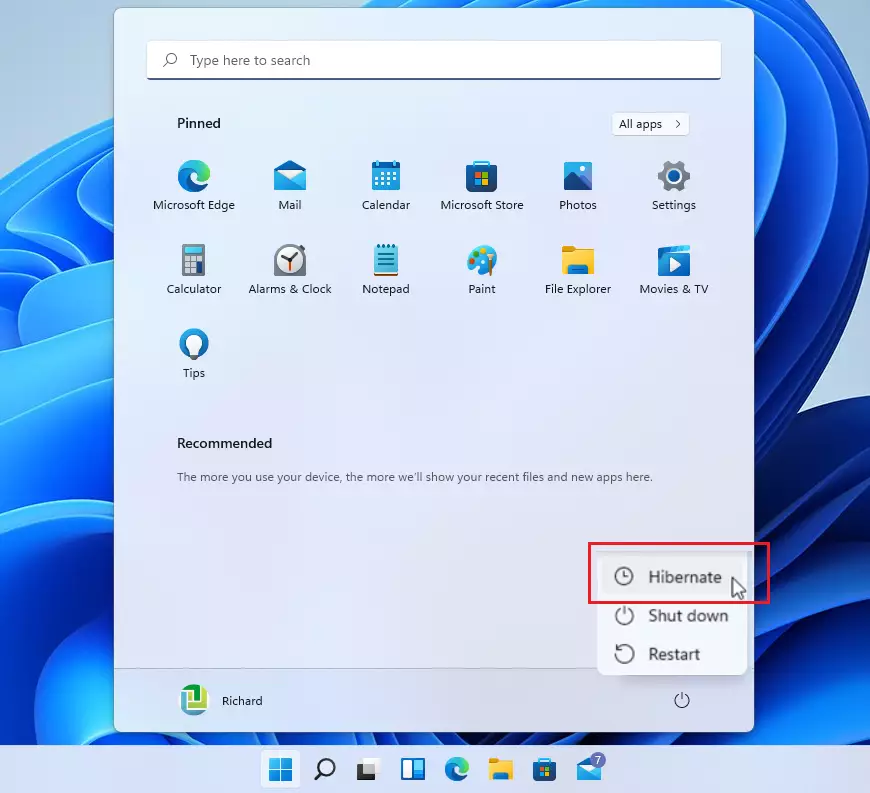
That’s it!
How to turn off hibernation mode in Windows 11
If you change your mind about enabling the hibernate mode in Windows 11, reverse the steps above by going to Start ==> search for “Control Panel” and select the control panel app and go to System and Security ==> Change what the power buttons do ==> Change settings that are currently unavailable then uncheck the Hibernate mode option.
That should do it!
Conclusion:
- Hibernate mode in Windows 11 allows you to save your work and sessions while completely shutting down your computer.
- It is an energy-efficient option compared to sleep mode, keeping your desktop sessions secure without using power.
- Activation of hibernate mode is straightforward through the Control Panel.
- If needed, you can easily disable hibernate mode by reversing the steps.
- Always check for hardware compatibility if you cannot find the hibernate option in your settings.

Leave a Reply